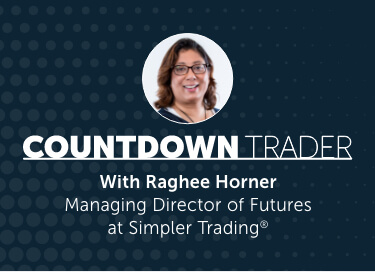Finding clarity through unclear markets
One of the adjustments we need to make as traders to shorter-term timeframes is when the longer-term timeframes lose clarity.
A lot of day traders don’t necessarily think about it.
“Should I be day trading, or is this the best environment for a short-term approach?”
On the other hand, longer-term traders don’t stop to ask themselves, ”should I be day trading now because I’ve lost the clarity that I might have been able to take advantage of for the last few weeks or few months?”
Although day trading is something we are often seeking out to do, many traders aren’t sure when this strategy is most effective and when they should be switching gears. Our cars have high and low gears. I remember playing pole position as a kid. Some parts of the track that you went through at high gears and others at low gears.
Trading isn’t that different.
Right now, we have an environment where it makes a lot of sense to think about shorter-term timeframes—day trading.
What are these situations where it would be better to consider day trading specifically? What are we looking at? It will come from the daily timeframe because the daily timeframe is oftentimes the timeframe that day traders don’t think to look at. That’s a needle mover of an idea.
How can the daily timeframe be of use to a trader?
Who’s looking at 1, 2, 3, and 5-minute charts.
The two things we’re looking for in daily time frame charts when day trading:
1) has the price gone beyond the historical volatility for that symbol. This could be a stock, index, ETF, or futures. Keep in mind that you could trade options on most of those asset classes. Remember, this has to be done on a symbol by symbol basis.
2) the second situation is, has that daily timeframe transitioned into some sort of chop? Think about what happens when the market chops the primary direction. The uptrend or downtrend that we were once in is now in a state of confusion. Confused market conditions can’t usually follow through clearly because not everyone agrees on what we need to be moving higher nor does everyone agree on what we need to need to be moving lower.
When people disagree, follow-through is much more stunted.
When we shorten our timeframe and start looking at a five or a two or a one minute chart, we can say, “look, I don’t need everyone to agree, but for the next 20 or 30 minutes or for the next 10 or 15 minutes, (because I’m day trading that confusion) I don’t need everyone to agree.”
We’re not going to be hurt by the confusion. In fact, in some ways we can often take advantage of it. Those are the gears that we need to have as traders. And we can shift into that high and low gear. Understand these principles to navigate the tracks in this market.



